R.I. is Dangerous Territory for Hundreds of Plants and Animals
November 7, 2022
Rhode Island’s 1,214 square miles are home, or at least were, to 41 federally and/or state endangered or threatened species. The list of endangered/threatened plants is considerably longer.
The list of animals at risk within Rhode Island’s borders and in its waters include mammals, birds, fish, reptiles, insects, a mollusk, and an amphibian. The list was last revised 16 years ago.
When a species naturally part of Rhode Island’s biota is in danger of local extinction, state law (RIGL 20-37-2) allows the Department of Environmental Management (DEM) to place it on the natural heritage list. Policies can then be implemented in an attempt to prevent further decline of a listed species.
For three decades, DEM ran the Rhode Island Natural Heritage Program, an office that documented the state’s biodiversity and provided guidance for the preservation of rare, endangered, and threatened species. Its creation, in 1978, was spearheaded by The Nature Conservancy and championed by the late Ed Wood, who was then the DEM director.
DEM’s involvement in spearheading the protection of at-risk species, however, diminished greatly in 2007 — the program a victim of budget cuts and a shift in how protected space is managed.
The Rhode Island Natural History Survey, a Kingston-based nonprofit with no regulatory powers, now maintains the database of the state’s listed species. DEM approves species listings and oversees the application of program priorities.
During his 28 years at DEM, Rick Enser, now retired and living in Vermont, worked mostly as the coordinator of the Natural Heritage Program. His work focused on protecting Rhode Island’s biological diversity through inventory, data collection, restoration work, environmental impact reviews, and preservation planning.
When the program was born, small-scale management was done, Enser has told ecoRI News, to preserve the integrity of natural habitats and rare species populations. But, over time, management of protected properties came to mean greater support for recreational use, he said. Concern for biodiversity waned.
How a protected property and, thus, wildlife habitat and the type of animal and plant species it can sustain, is managed is now largely tied to funding. Hunting, fishing, hiking, and other recreational uses have become the priority. Space needed for human play, combined with relentless development, leaves a shrinking amount of habitat for at-risk species in Rhode Island.
Native species in imminent danger of extirpation from Rhode Island are likely to become state endangered if current trends in habitat loss or other detrimental factors remain unchanged, according to the National History Survey. In general, these species have three to five known or estimated populations. An additional 89 animals are listed as species of concern.
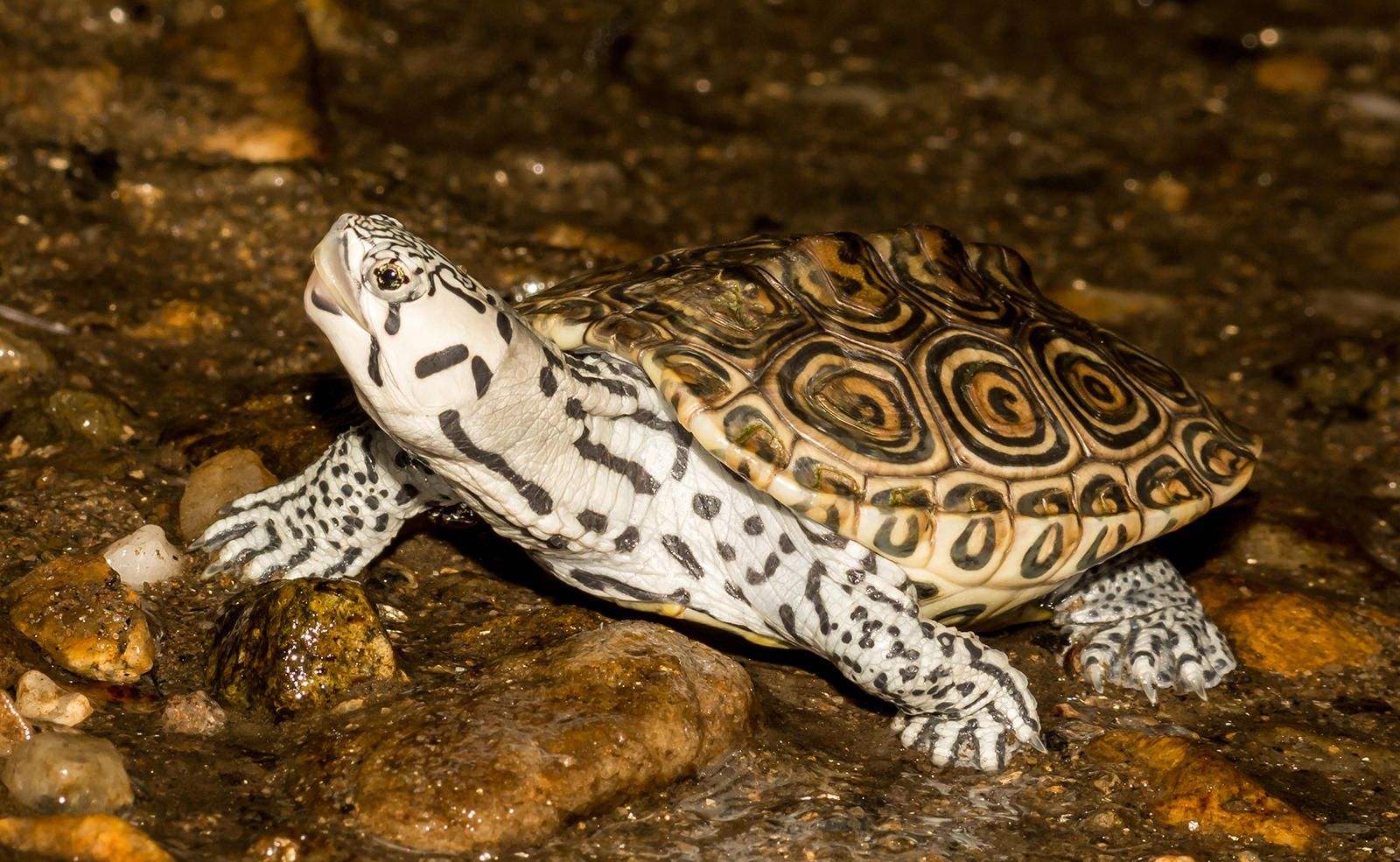
Here are the state listed endangered and threatened animals in Rhode Island:
Northern diamondback terrapin (endangered): Their population has suffered greatly due to poaching and habitat loss. DEM notes development has divided habitat into small pieces, resulting in islands of resources separated by roads and other uninhabitable landscapes. This is especially detrimental to turtles since they require both wetland habitats and adjacent upland habitats for nesting.
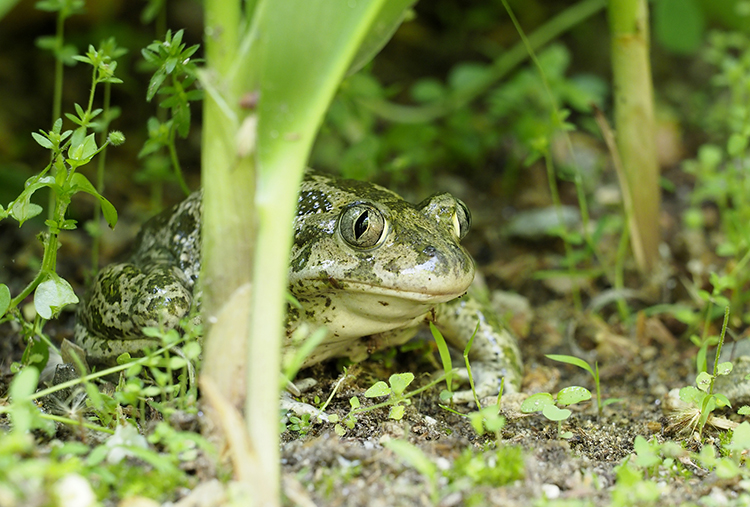
Eastern spadefoot (endangered): This species of toad can only be found at a few sites in Washington and Kent counties. They spend most of their lives buried in sandy loam, only rising briefly to breed in shallow wetlands filled by rainwater. Habitat destruction is their main threat.
Peregrine falcon (endangered): The species’ populations declined rapidly between 1950 and 1965 throughout the United States and parts of Europe. By 1975, the entire population of peregrines in the eastern United States was considered to be extirpated. The decline was attributed to the impact of organochlorine pesticides, such as DDT, on breeding populations.
Barn owl (endangered): Land-use changes, particularly a decrease in the number of farms, have contributed to the species’ decline. Not only has foraging habitat been reduced, but the increased use of rodent poisons has resulted in a smaller food base.
Pied-billed grebe (endangered): This bird nests in low numbers throughout its entire range. This, coupled with wetland degradation and loss, has resulted in a species decline throughout New England.
American bittern (endangered): The primary reason for the bird’s decline is loss of habitat. The marshes and swamps upon which this species depends have been drained and filled for a variety of human uses.
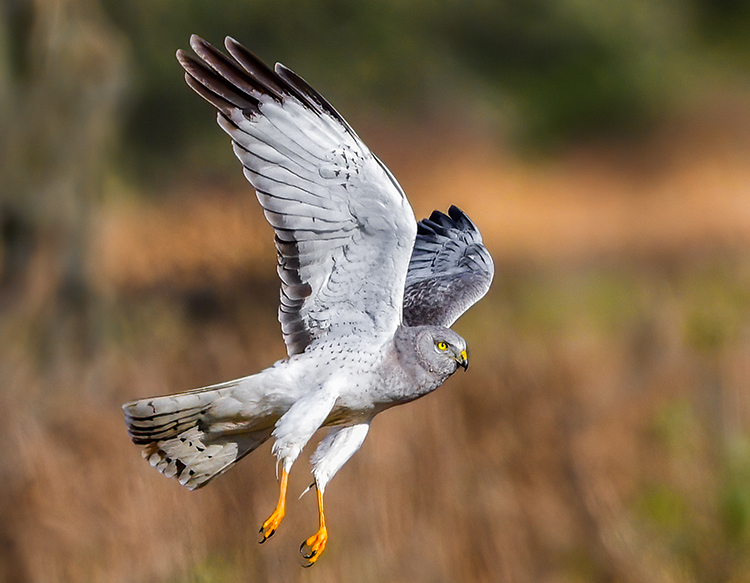
Northern harrier (endangered): The species is often called the marsh hawk because it inhabits open marshlands and wet meadows. The species has a remarkable sense of hearing. Like owls, it has a curved, sound-reflecting facial ruff which, when combined with characteristic low flight, enables the bird to locate prey by sound.
Upland sandpiper (endangered): As passenger pigeon populations declined in the late 1800s — the last passenger pigeon died in 1914 — hunters trained their sights on this gamebird. The species, once abundant on eastern farmlands and Midwestern prairies, experienced a population decline due to overhunting. The birds have not been able to regain their former numbers.
Cerulean warbler (endangered): Prefers deciduous forests, especially in river valleys. Breeds in mature hardwoods either in uplands or along streams. Prefers elm, soft maple, oak, birch, hickory, beech, basswood, linden, sycamore, or black ash. Nests only in tall forest with clear understory.
Yellow-breasted chat (endangered): It’s a bird of successional habitat, overgrown fields, and abundant thickets. As farmland and pastures disappeared and reverted to forests or were developed, populations declined.
Ringed boghaunter (endangered): This species of dragonfly is found near bogs and fens with acidic waters that contain sphagnum moss and areas of open water. The fully aquatic nymph lives underwater for more than a year. The species’ primary threat is habitat degradation.
Eastern pearlshell (endangered): The freshwater mussel is found in streams and small rivers that support trout or salmon populations. The species isn’t found in lakes or ponds.

Bobcat (threatened): “Despite their apparent success in recent years, it is difficult to predict how they will do in the future.” Habitat loss and fragmentation are the biggest threats facing the species.
American brook lamprey (threatened): In 2015, the freshwater species was collected from six streams in the northeastern part of the state. Habitat loss is its biggest threat.
Least bittern (threatened): “This secretive bird has been adversely affected by the draining and filling of wetlands.”
Least tern (threatened): In Rhode Island, this species nests on small sandy islands and more commonly on barrier beaches. They face many threats in these habitats from mammalian and avian predation, tidal surges, and “excessive recreational use of beaches.”
Northern parula (threatened): The bird is an indicator species of high-quality deciduous swamp habitats. In Rhode Island, the state’s entire population occupies two protected swamps in Charlestown and South Kingstown. “No specific conservation strategy is indicated, but for recognition of their specialized habitat preferences and prevention of the loss or fragmentation of these swamps.”
Black-throated blue warbler (threatened): The bird usually keeps to the shady understory. While it moves about rather actively in search of insects, it often will forage in the same area for minutes at a time, rather than moving quickly through the forest like some warblers.
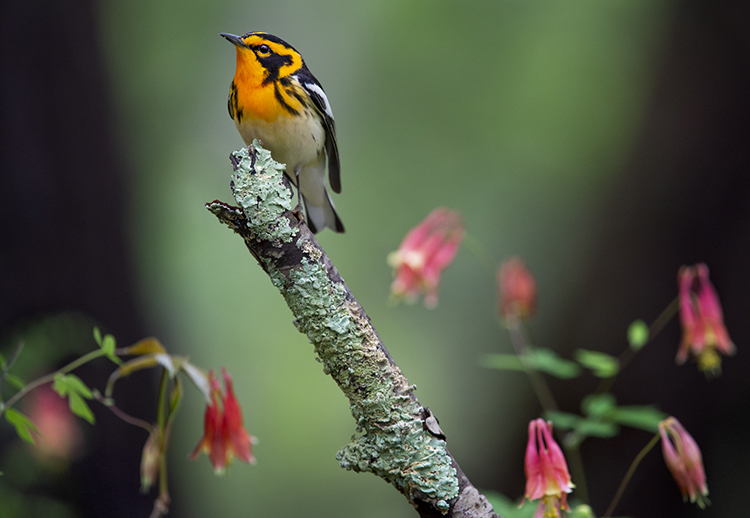
Blackburnian warbler (threatened): In the northern forest in summer, the male may perch on the topmost twig of a spruce, showing off the flaming orange of his throat. The female also stays high in the conifers, and the nest is usually built far above the ground.
Grasshopper sparrow (threatened): The species has steadily declined as dry, grassy uplands and farms have reverted to forests or have been developed.
Pine barrens tiger beetle (threatened): Also known as the northern barrens tiger beetle, the species preys on small insects and other arthropods and are visual hunters. They often chase their prey in fast, short bursts with brief stops between runs. These stops are necessary for orientation, as these beetles can run so fast that they can’t see the prey they are pursuing.
Seabeach tiger beetle (threatened): Maritime beach strands provide critical habitat for this species.
Salt marsh tiger beetle (threatened): The species is vulnerable to tidal erosion, sea-level rise, development, and coastal oil spills.
Dark-bellied tiger beetle (threatened): Also known as the oblique-lined tiger beetle, it inhabits areas that are sparsely vegetated or have bare soil in grasslands.
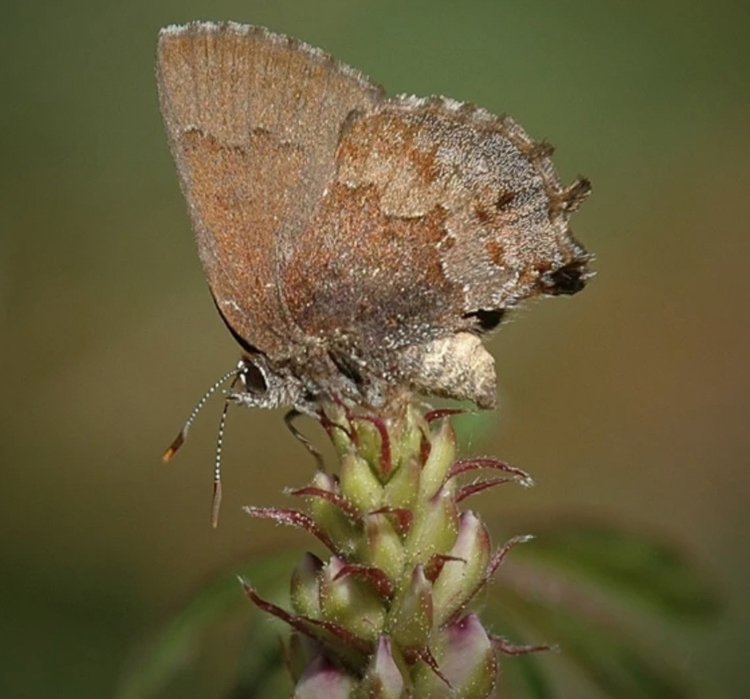
Frosted elfin (threatened): Pitch pine barrens support a collection of priority moth and butterfly species, including the frosted elfin, that generally depend on a single larval food plant unique to these habitats.
Southern sprite (threatened): This species of damselfly prefers bogs, lakes, marshes, ponds, slow streams, and swamps with dense in-water and waterside grasses, sedges, and weeds and waterlogged soils.
Brook snaketail (threatened): This species of dragonfly inhabits clear, rapid-flowing streams that are shallow with a sandy and rocky substrate.
Zebra clubtail (threatened): This dragonfly species is usually found in forest streams with intermittent rapids, including trout streams with sandy/mucky bottoms. Females are reclusive and rarely seen.
Crimson-ringed whiteface (threatened): This species of dragonfly is usually found around boggy or marshy areas.
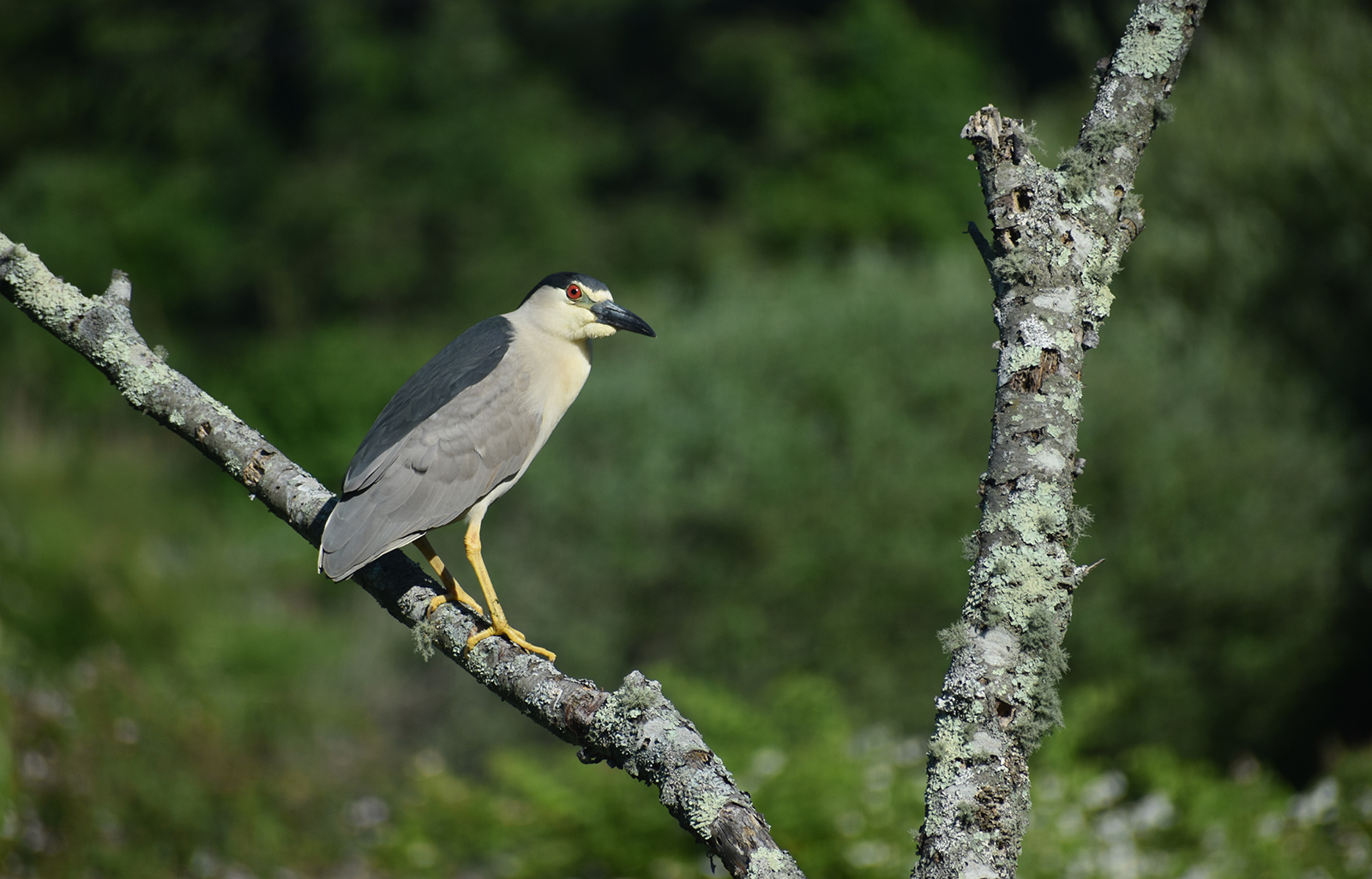
Another 89 species are listed under concern, because of various factors of rarity and/or vulnerability. Among them are: American oystercatcher (bird); black-crowned night heron; black rat snake; blueberry sallow (moth); comet darner (dragonfly); eastern pond mussel; hoary elfin (butterfly); hooded merganser; little blue heron; long-eared owl; northern hairstreak (butterfly); marsh wren; northern leopard frog; northern pearly eye (butterfly); northern spring salamander; purple tiger beetle; snowy egret; wood turtle; and yellow-crowned night heron.
Another 17 species are listed under state historical, meaning they have been documented in the state during the past 100 years, but which are currently unknown to be here. Among them are (last documented sighting in Rhode Island): brook floater (1897, freshwater mussel); barrens tiger beetle (1921); royal walnut moth (1939); sharp-shinned hawk (1939); persius duskywing (1950, butterfly); timber rattlesnake (1972); golden-winged warbler (1960); regal fritillary (1990, butterfly); and cliff swallow (1991).
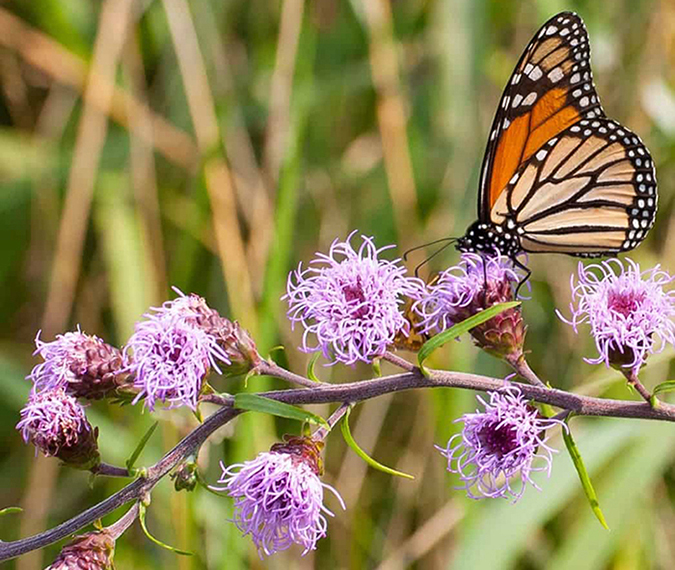
The list for plants, as of 2016, includes 413 species that are state endangered, state threatened, of concern, or historical. Among them are: foxtail bog-clubmoss (endangered); northern blazing star (endangered); quill-leaved arrowhead (endangered); purple milkweed (endangered); purple-stemmed angelica (endangered); American larch (threatened); green-headed coneflower (threatened); zig-zag goldenrod (threatened); Atlantic mock bishop’s-weed (concern); clasping milkweed (concern); fiddlehead fern (concern); awl-leaved arrowhead (historical); red elderberry (historical); and yellow pimpernel (historic).
The federal Endangered Species Act was created five years before Rhode Island established its Natural Heritage Program. The law lists species associated with a certain level of concern, including threatened and endangered, in hopes of avoiding extinction.
Here are the federally listed species that can be found in Rhode Island, at least occasionally, that are threatened or endangered:
North Atlantic right whale (endangered): These marine mammals are dying faster than they can reproduce. These whales rarely die of natural causes. Instead, they are struck by ships or suffer fatal injuries from fishing gear. The latest preliminary estimate suggests there are fewer than 350 remaining, including less than 100 breeding females. They have been listed as endangered under the Endangered Species Act since 1970. If more isn’t done to protect them, scientists have projected the species could become extinct in about 20 years. Besides vessel strikes and entanglement in fishing gear, threats include changes in distribution and availability of prey, climate change, habitat degradation, and ocean noise.
Fin whale (endangered): The second-largest whale species, behind only the blue whale. The whaling industry killed a huge number during the mid-1900s, nearly 725,000 in the Southern Hemisphere alone. Threats include climate change, entanglement in fishing gear, lack of prey due to overfishing, ocean noise, and vessel strikes.

Humpback whale (endangered): Before a moratorium on commercial whaling in 1985, all populations of humpback whales had been severely reduced, most by more than 95%. Currently, four out of the 14 distinct population segments are still protected as endangered, and one is listed as threatened. Threats include entanglement in fishing gear, vessel strikes, and ocean noise.
Shortnose sturgeon (endangered): They live in rivers and coastal waters from Canada to Florida. The primary threats to this species are habitat degradation, water pollution, dredging, water withdrawals, fisheries bycatch, and habitat impediments such as dams.
Hawksbill sea turtle (endangered): They are the only species of sea turtle that can survive on a diet consisting mainly of sponges. They also play a key role in the function of marine ecosystems. In many parts of the world, they are hunted for their shells, which are used to make jewelry and trinkets. Other threats include bycatch in fishing gear, climate change, harvest of eggs, loss and degradation of nesting and foraging habitat, and pollution.
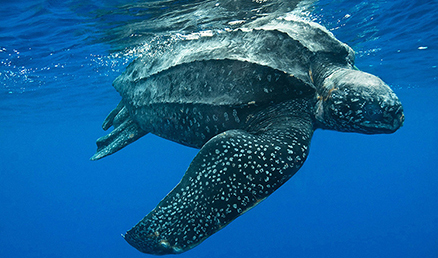
Atlantic leatherback (endangered): This sea turtle is the largest turtle in the world. It’s estimated that the global population has declined 40% over the past three generations. Threats include bycatch in fishing gear, climate change, loss and degradation of nesting and foraging habitat, and pollution.
Kemp’s ridley sea turtle (endangered): They are the smallest sea turtle in the world. Threats include bycatch in fishing gear, climate change, direct harvest of turtles and eggs, loss and degradation of nesting habitat, and pollution.

Roseate tern (endangered): The bird’s beauty led to its decline as hunters shot them indiscriminately to decorate hats in the late 1800s. During the 1930s, the species began to rebound when hunting was banned and many of its breeding colonies were protected. However, the species’ two populations remain small and vulnerable to extirpation because many of their breeding colony sites are no longer suitable for nesting. This lack of suitable nesting is due to the combined negative impacts from sea-level rise, predation, and human development. More than 90% of the northeastern population is now limited to three major breeding colonies, including one off Long Island, N.Y., and two Massachusetts islands in Buzzards Bay.
American burying beetle (endangered): It is the largest carrion beetle in North America, at 1 to 1.8 inches in length. Based on the past 15 years of surveys, the beetle can be found in portions of Arkansas, Kansas, Oklahoma, Nebraska, South Dakota, and Texas; on Block Island off the coast of Rhode Island; and in reintroduced populations on Nantucket Island off the coast of Massachusetts. Threats include habitat loss and artificial light.
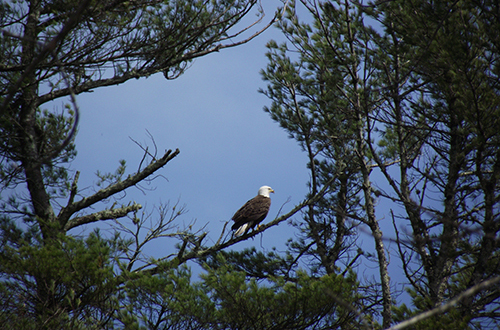
Bald eagle (threatened): In the mid-1900s, the nation’s symbol was in danger of extinction throughout most of its range. Its populations were negatively impacted by habitat destruction and degradation, illegal shooting, and the contamination of its food sources, largely as a consequence of the insecticide dichlorodiphenyltrichloroethane (DDT).
Piping plover (threatened): This small migratory shorebird nests and feeds along coastal sand and gravel beaches in North America.
Loggerhead sea turtle (threatened): U.S. populations are in decline due to bycatch in fishing gear such as trawls, gillnets, and longlines.
Northeastern beach tiger beetle (threatened): Once abundant along coastal beaches throughout much of the Northeast, today the tiny sand-colored beetles are largely only found in the Chesapeake Bay region and in parts of Massachusetts. They spend their whole lives on long, wide beaches with little human activity, often congregating at the water’s edge during warm days.
The Natural History Survey encourages the submission of heritage species observations to improve the value of the database. To submit an animal observation report, click here. To submit a plant observation report, click here.




Such a shame… and it’s projects like this – https://ecori.org/2020-1-29-massive-solar-project-divides-north-smithfield/ that are partially to blame. Quote from article: Opponents have noted that the Whortleberry Hill ecosystem is on the Rhode Island Department of Environmental Management’s 2015 Wildlife Action Plan’s “conservation opportunity areas” map and is designated a regional “wildlife corridor” critical to animal migration and a “natural heritage area” that is home to state-listed species that are endangered or threatened. (end quote). We need more solutions – legal protections, resources, things like animal highways/crossings, as well as more wildlife education programs in schools.
pods of hump back whales about 10 miles south of block island for the last two years during tuna season. there are more every year
It’s supposed to be called Department of Environmental Management but as evidenced by this article. They are under funded and undermanned and have fallen down on the job.
A concerted effort needs to be done to identify all our threatened endangered and species of concern. That includes plants.
A plan of action must be developed to insure the health and well-being of all these species.
My philosophy has always been once a species is gone its gone firever.
Every time a species meets its demise or is in decline is a failure on the part of the Department of Environmental Management.
good reporting thanks. Seems wildlife in general including birds is struggling, climate change, solar “farms,” sprawl development, highways, light pollution, glass widows… are all taking a toll – and underlying a lot of that is our population growth – when I came to RI it was about 947,000 now its almost 1.1 million – adding 150,000 people to our small state, many of then not wanting to live in the older cities, has had a major impact